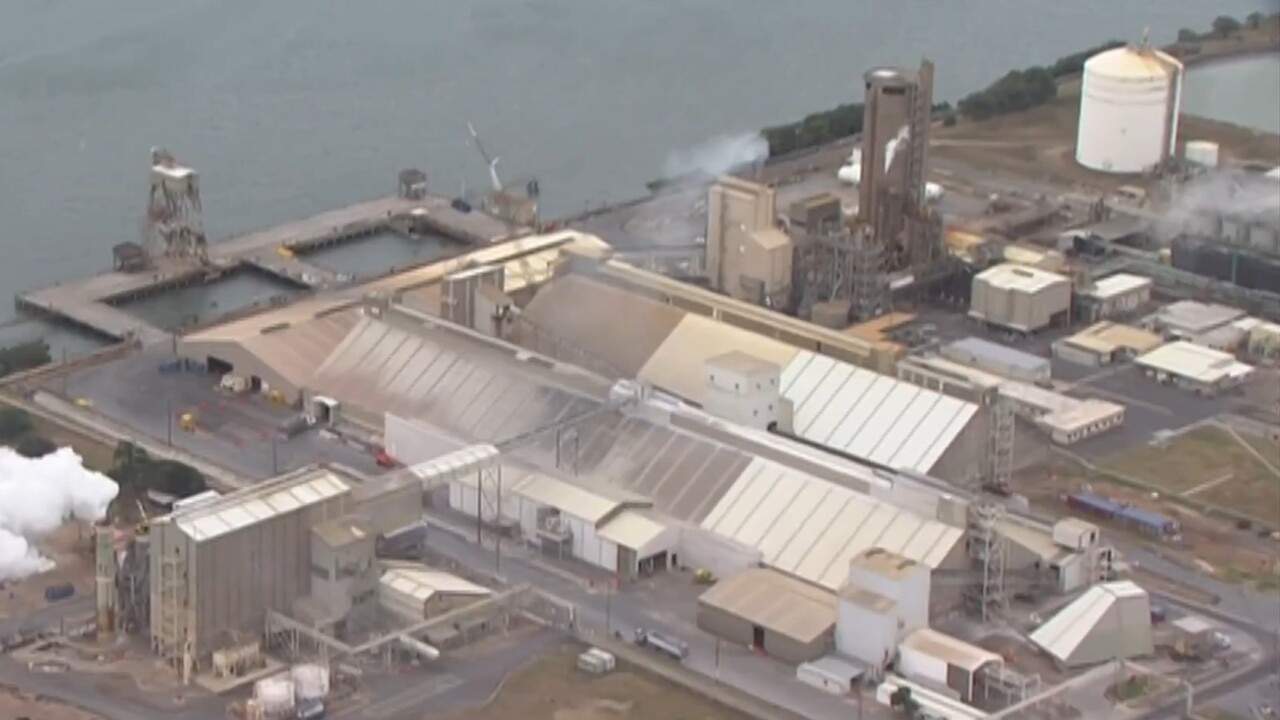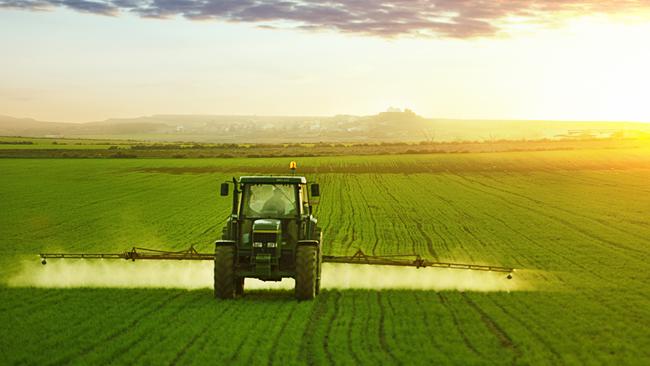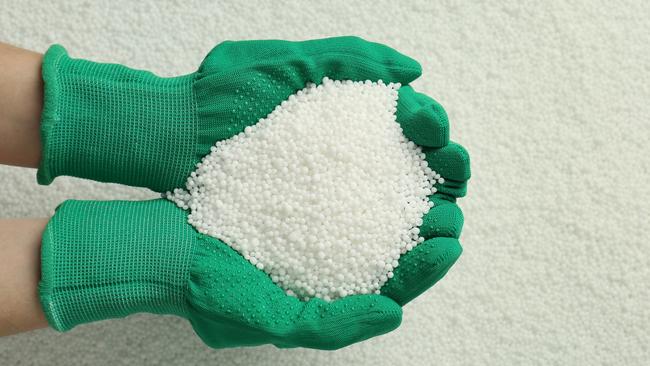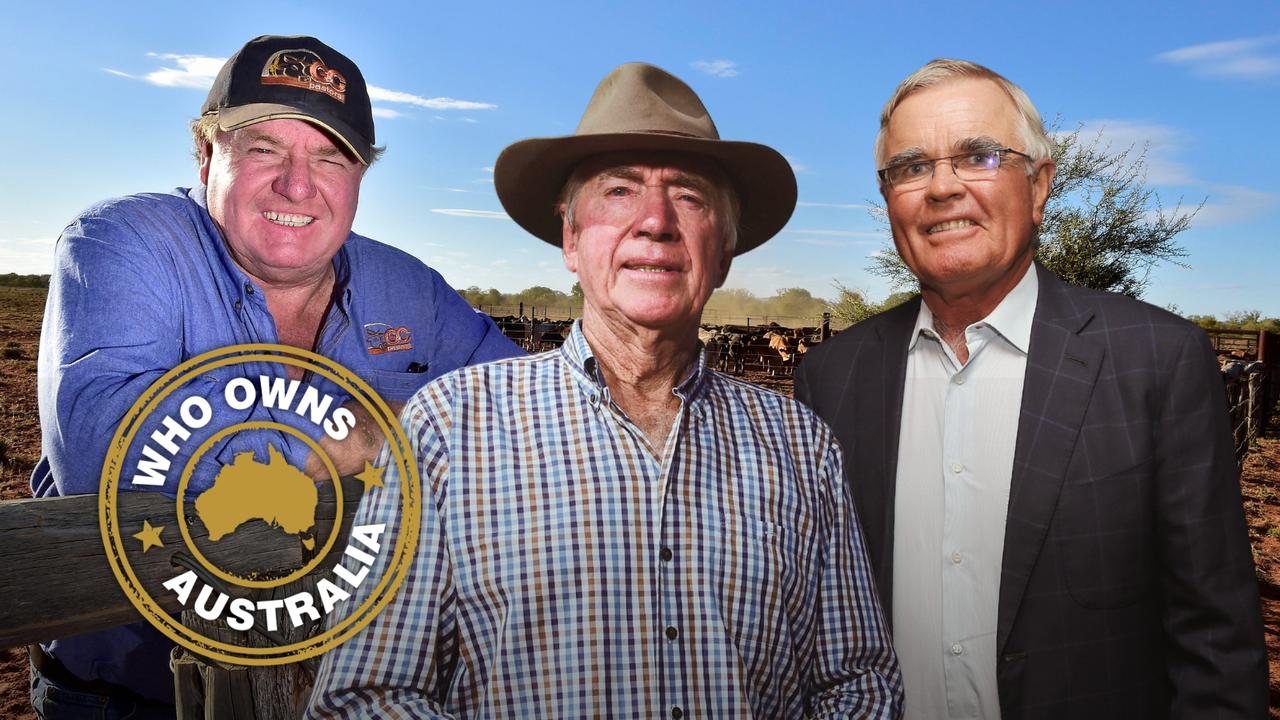Fertiliser prices mean new ways of production and selling are being considered
Fertiliser prices have always bounced around, but after the last few years Aussie production is at a crossroads.

Deep in the remote mining areas of Australia, a quiet revolution in precious minerals is evolving.
It’s not the gold that has captured fossickers’ imaginations going back 170 years, or the modern day hot property of lithium for electric battery production, or rare earths required for today’s electronics.
It’s the farmer’s version of gold: fertiliser.
Facing a dearth of supplies and some of the highest prices in decades, sourcing locally produced fertiliser to feed farmers’ paddocks is regarded as a “game changer” for Australian agriculture.
A number of Australian mining companies are slowly working towards developing local sources of potash, urea and rock phosphate fertilisers – products which Australia has largely had to import to satisfy its nutrient needs for crops and pastures.

According to Fertilizer Australia, the umbrella body for the Australian fertiliser industry, total domestic sales average about 5.4 million tonnes of products a year, which range from single superphosphate and mono-ammonium phosphate to nitrogen-rich sulphate of ammonia and urea.
Urea is the most concentrated solid nitrogen fertiliser and accounts for two million tonnes of Australian farmers’ fertiliser needs, although only about 10 per cent of that is manufactured domestically. Australian fertiliser companies manufacture a large proportion of the 800,000 tonnes of single superphosphate required annually, but it is made from imported phosphate rock.
Fertiliser prices have always bounced up and down according to global supply and demand. Three years ago, Australian farmers were revelling in some of the lowest fertiliser prices in decades.
But a combination of factors, from gas prices and natural disasters to supply chain bottlenecks, has seen global prices skyrocket during the past year.
China’s erratic trade policy is one driver behind the current price surge. Australia sources about 50-60 per cent of its fertiliser needs from China.
According to Centrex managing director Rob Mencel, the Chinese Government announced a relaxation in export taxes on its fertiliser exports three years ago. That prompted global fertiliser prices to fall overnight to low levels as the market tried to fathom what the move meant. Mencel says rock phosphate prices fell from about $US100 a tonne to $US70 a tonne and stayed at that level for about 18-20 months. The prices of other fertiliser products also slumped.
“Australia was in danger of losing its fertiliser industry if prices remained so low,” he says.
But recent cold winter temperatures in the northern hemisphere prompted major urea producers Russia and China to divert gas away from fertiliser production to power and heating needs. Concerned about domestic ructions among its own farmers, China flipped its previous policy to limit exports. That, and other factors, prompted a run on demand for all types of fertilisers, sending prices skyrocketing.
Rock phosphate prices have more than doubled to $US150 a tonne, although some sales have been rumoured to have hit more than $US180 a tonne.
Prices for the most used fertiliser, urea, have shot to record levels in recent months.
Grain Growers Australia chairman Brett Hosking says farmers are now paying about $1200 a tonne for urea when typically they would pay about $500 to $600 a tonne.
“That ($1200 a tonne) is definitely not a sustainable price. Growers will hold off until they see surety of season before they pay that sort of money,” Hosking says.
A number of companies listed on the Australian Securities Exchange are pushing to become homegrown producers of fertiliser, including Centrex, Strike Energy, Leigh Creek Energy, Reward Minerals, Australian Potash, Kalium Lakes, Agrimin, BCI Minerals and Trigg Mining. While most intend to supply the Australian market, some fertiliser will end up in overseas markets when seasonal demand here slows.
Centrex is focusing on rock phosphate production. It has the highest grade phosphate deposits in Australia “by a country mile”, Mencel says. “If we can beneficiate (essentially wash and desilt) the rock phosphate, it may become one of the highest grade products in the world,” he says.
Centrex’s tenement is at Admore, in Queensland, not far from Incitec Pivot Limited’s Phosphate Hill mine. Aside from the rock phosphate’s high quality, the Centrex mine has one other advantage: the mineral deposit is at shallow depths.
Mencel says Australia has an annual demand of 400,000 tonnes of rock phosphate and New Zealand 600,000 tonnes, and Centrex hopes to sell some of its rock phosphate for direct application in high rainfall perennial pasture systems in both markets through its Agriflex marketing arm.
Most of that is likely to end up on organic farms. “We think the organic market is a good space to be in,” Mencel says.
But 80-90 per cent of Centrex’s output will go to supply other fertiliser manufacturers.
Farm use of urea has taken off in Australia during the past 30 years, particularly as grain growers began to understand the benefits of topdressing their crops with the nitrogen. So there is a lot of interest in the urea operations of Leigh Creek Energy, northwest of the Flinders Ranges, and Strike Energy in Western Australia, particularly since Incitec Pivot plans to close its Gibson Island plant in the near future.
Leigh Creek Energy is planning to build a one million tonne a year urea plant costing $2.6 billion on top of a disused coal mine. The carbon-neutral operation will set the underground coal seam alight and draw off the resultant gas to convert to urea in the above-ground plant.
In December, the company announced it had struck an agreement with the mine’s builder, Daelim Co. of South Korea, to take a minimum 500,000 tonnes of urea each year for five years for export.

Leigh Creek Energy managing director Phil Staveley says the other half of production will be sold into the Australian market. An advantage of Leigh Creek is that, being a former coal mining town, it has existing town infrastructure plus a rail line direct to Port Augusta.
“The rail line was upgraded in 2015, so it is in pretty good condition but the government would have to get it back to a workable condition. From Port Augusta, the urea could be loaded on ships at the port or travel by rail to market,” Staveley says. The Leigh Creek project has capacity to double in size down the track, but he says that would double the cost.
Strike Energy is in the early stages of developing a $2.2 billion urea plant in Geraldton, using low carbon gas from the company’s Perth Basin gas field about 90km away, linked by rail. The plant will be able to produce 1.4 million tonnes of urea annually. Chairman John Poynton told the Strike Energy annual general meeting last November the company hoped to enter the front-end engineering and design phase this year, after earlier entering into offtake negotiations with buyers.
Western Australia farmers use about 600,000 tonnes of urea a year and the company aspires to provide all their needs, plus supply the east coast market. Last month, the Federal Government gave Strike Energy a big boost, awarding it Major Project Status, which means it is eligible for Commonwealth support. Collectively, Leigh Creek Energy and Strike Energy have the potential to supply all of Australia’s urea fertiliser needs, although in practise, that is not likely to happen unless there is substantial expansion in production in the future.
Western Australia is set to become a global hub for production of sulphate of potash fertilisers, used mostly in horticultural production. Australia has historically not used sulphate of potash, instead opting for cheaper but lesser quality muriate of potassium fertiliser. MOP contains high levels of chlorides, which can be used on rice, corn and wheat crops but is toxic to fruit and vegetables in high doses.
In contrast, SOP is chloride-free, contains beneficial sulphur and is globally preferred for high value horticultural crops, such as nuts, fruit and vegetables. The massive underground reservoirs of brine in Western Australia have higher-than-normal levels of potassium but are also unusually rich in sulphur. According to Fertilizer Australia, about 300,000 tonnes of MOP has traditionally been imported into Australia each year from countries such as Belarus, Canada, Germany, Israel and Jordan.
Australian Potash executive chairman Matt Shackleton says Australian growers would opt for SOP over MOP if it were not for the price difference, with SOP more expensive by about $US270-$US450 a tonne.
Australian Potash, Kalium Lakes, Agrimin, BCI Minerals, Reward Minerals and Trigg Mining are all in varying stages of development of SOP fertiliser manufacturing operations.
In simple terms, the mineral companies pump underground brine into above ground evaporative ponds. After naturally evaporating, the remaining salts crystalise in the ponds, then are milled and processed into SOP.
Salt Lake Potash was the most advanced but was placed in voluntary administration last October after experiencing difficulties with the complicated process. Kalium Lakes has also run into problems commissioning its 90,000-tonne-per-year Beyondie processing plant in central Western Australia.
Shackleton says Australian Potash has learnt ample lessons from the first movers and is taking a conservative time frame to produce SOP at its Lake Wells project northeast of Kalgoorlie. It is not expecting to produce commercial quantities of SOP until 2024, about 10 years after it began its fertiliser dream. Full production will see 170,000 tonnes of fertiliser being processed annually for 20 years.
“Patience is the key. But we have a different method of mining (than Salt Lake Potash and Kalium Lakes),” Shackleton says.
Collectively, the West Australian potassium fertiliser projects will more than cover Australia’s needs but most are eyeing lucrative markets in Asia, the US and Europe.
“Demand overseas is huge for sulphate of potash,” Shackleton says.
National Farmers’ Federation chief executive Tony Mahar says the recent high prices for fertiliser and other farm inputs, such as chemicals and diesel, has highlighted the fragility of the global supply chain.
“There is a critical need to review the capacity and constraints of the current supply chain and we desperately need to reinvest in it,” Mahar says. “Domestic fertiliser supplies can’t come soon enough. We need it yesterday.”




